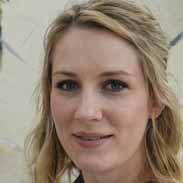NHA CPT studyguide – Flashcards
Unlock all answers in this set
Unlock answersquestion
Order of Draw: Blood Culture
answer
1st, YELLOW , Sodium polyethenal sulfonate, 8 inversions, Microbiology
question
Order of Draw: Coagulation
answer
2nd, LIGHT BLUE, Sodium citrate , 3-4 inversions, Chemistry, Common tests: PT, PTT, APTT, and INR
question
Serum
answer
3rd, RED, no additives, no inversions, Chemistry, common tests: CMP, BMP, Hepatitis panel, therapeutic drug level
question
Plasma
answer
4th, GREEN, heparin, 8 inversions, STAT Chemistry, Common tests: Amonia, plasma, stat whole blood, BMP-Basic Metabolic Panel, CMP-Comprehensive metabolic panel, troponin
question
Whole Blood (hematology cell counting)
answer
5th, LAVENDER, EDTA, 8 inversions, Hematology, Common Tests: CBC, lead, ESR, Retic
question
Glucose
answer
6th, GREY, Sodium fluoride/ Potassium oxalate, 8 inversions, Chemistry, Common tests: glucose, alcohol, latic acid
question
The THREE phases of Hemostasis
answer
1. Vasoconstriction 2. Platelet formation 3. Clotting
question
Blood Thinners
answer
Warfarin (coumadin) , Asparin
question
Pulmonary System
answer
Blood is oxygenated and returned to the heart to be sent to systemic system. (note: pulmonary arteries)
question
Arteries
answer
Oxygenated blood from Left side of the heart to body muscular walls, and to the nerve supply
question
Systemic system
answer
Blood through whole body to deliver and remove oxygen and waste
question
Platelets
answer
membrane- bound packets of cytoplasm (*note: no dna, or nucleus)
question
Thixotropic Gel
answer
Inert, synthetic substance makes a barrier between plasma and formed elements
question
Capillaries
answer
Tiny blood vessels (smallest) thin pourus walls, carries oxygen to tissues
question
Veins
answer
Thin walls, Deoxygenated blood to the right side of the heart, lack of nerve supply
question
Blood Pressure
answer
Normal BP= 120/80 mm/hg, High BP= greater than or equal to 140/90 mm/Hg, Low BP= < 120/80 mm/Hg
question
Tube Sizes
answer
Adult: 3-10mL, Pediatric: 2-4mL
question
Blood Smears
answer
Feathered Edge
question
Number of Leukocytes (white blood cells)
answer
5 Types
question
Formed Elements
answer
Cellular elements such as RBC. 45% of a blood sample is formed elements
question
Heparin
answer
Inactivates thrombin and thromboplastin
question
Whole Blood
answer
Blood collected with an anticoagulant used for hematology tests
question
EDTA
answer
Binds Calcium
question
Order of Cappilary Draw
answer
L.G.G.R/SST
question
Hemochromatosis
answer
Excess of iron in the blood
question
Hemolysis
answer
Destruction of Red Blood Cells (RBCs)
question
Hemostasis
answer
Process by which the body stops blood flow from a leaking wound
question
Chain of Infection
answer
1. Causitive agent 2. Resevoir 3. Portal of opening 4. Mode of transmission 5. Portal of entry 6. Succeptable host
question
Sodium fluoride and Potassium oxalate
answer
Binds Calcium
question
Baby Lancet Size/ Depth
answer
0.65mm per 1kg
question
Plasma
answer
Fluid portion of blood with anticoagulants 55%
question
Serum
answer
Fluid portion of blood with out clotting factors
question
Chilled Specimen
answer
ABG- Aterial Blood Gases
question
Sodium Citrate
answer
Binds Calcium
question
Hematoma
answer
Bruise, clotted blood underneath the skin
question
Hematocrit
answer
% of blood volume in the body that is RBC
question
Hemoconcentration
answer
Increased ratio of formed elements (such as RBC) to plasma
question
Light Sensitive
answer
Bilirubin
question
Chain of Custody
answer
*purpose and procedure explained to pt *pt consent form *pt picture identification
question
Bilirubin, Vitamins C, K, and E
answer
Protect from light
question
STAT
answer
Immediately 1 hour to report
question
ASAP
answer
2-4 hours to report
question
Polymer gel/ clot activator
answer
SST
question
Arteries
answer
Carry blood that is high in oxygen
question
Blood Borne Pathogens
answer
Pathogenic microorganisms that are present in the blood
question
Sharps
answer
Objects that can penetrate the skin such as needles, scalpels, broken glass, broken capillary tubes, or lancets.
question
Plasma
answer
The yellow fluid component of blood
question
Leukocyte
answer
White blood cell
question
Hemoglobin
answer
Iron containing protien pigment present in red blood cells, it functions primarily to transport oxygen from the lungs to the tissue of the body
question
Thrombocyte
answer
Platelet
question
Erytrhocyte
answer
Red Blood Cell
question
Pathogens
answer
Disease producing agents
question
Coagulation
answer
Cessation of bleeding , formation of a clot (hemostasis)
question
Sharps Container
answer
Fill only 80% of capacity to prevent accidental needle puncture
question
Housekeeping rule of thumb (Cheapest)
answer
One cup of Bleach = 10 cups of water
question
Antiseptic
answer
70% alcohol
question
Gloves
answer
Standard precautions policy states that if there is a possibility of coming into contact with a patient's blood, GLOVES ARE NECESSARY
question
Gauge of needle
answer
The size of the needle at smallest is 27 and 16 at the largest
question
Tourniquet is placed
answer
3-4 inches above the skin and should never be left on longer than one minute
question
A properly labeled tube has
answer
Patient's complete name,. id, number date and time sample obtained with initials
question
Limit of Sticks on a patient
answer
If you miss twice trying for a blood draw you may not try again
question
Arterial Puncture
answer
Done by physician only
question
Capillary Puncture
answer
Puncture skin by lancet
question
Venipuncture
answer
Puncture to vein with the purpose of obtaining blood



